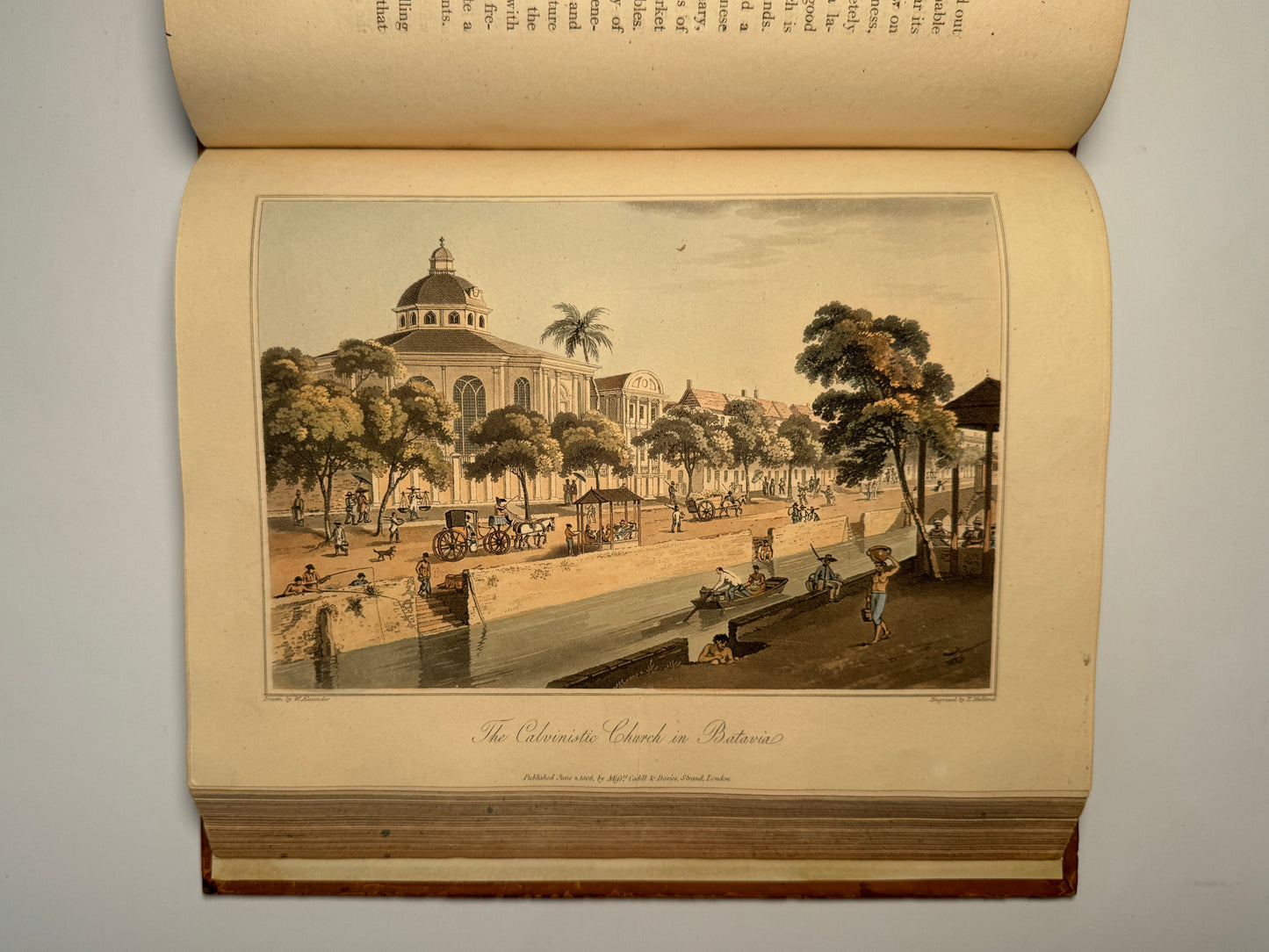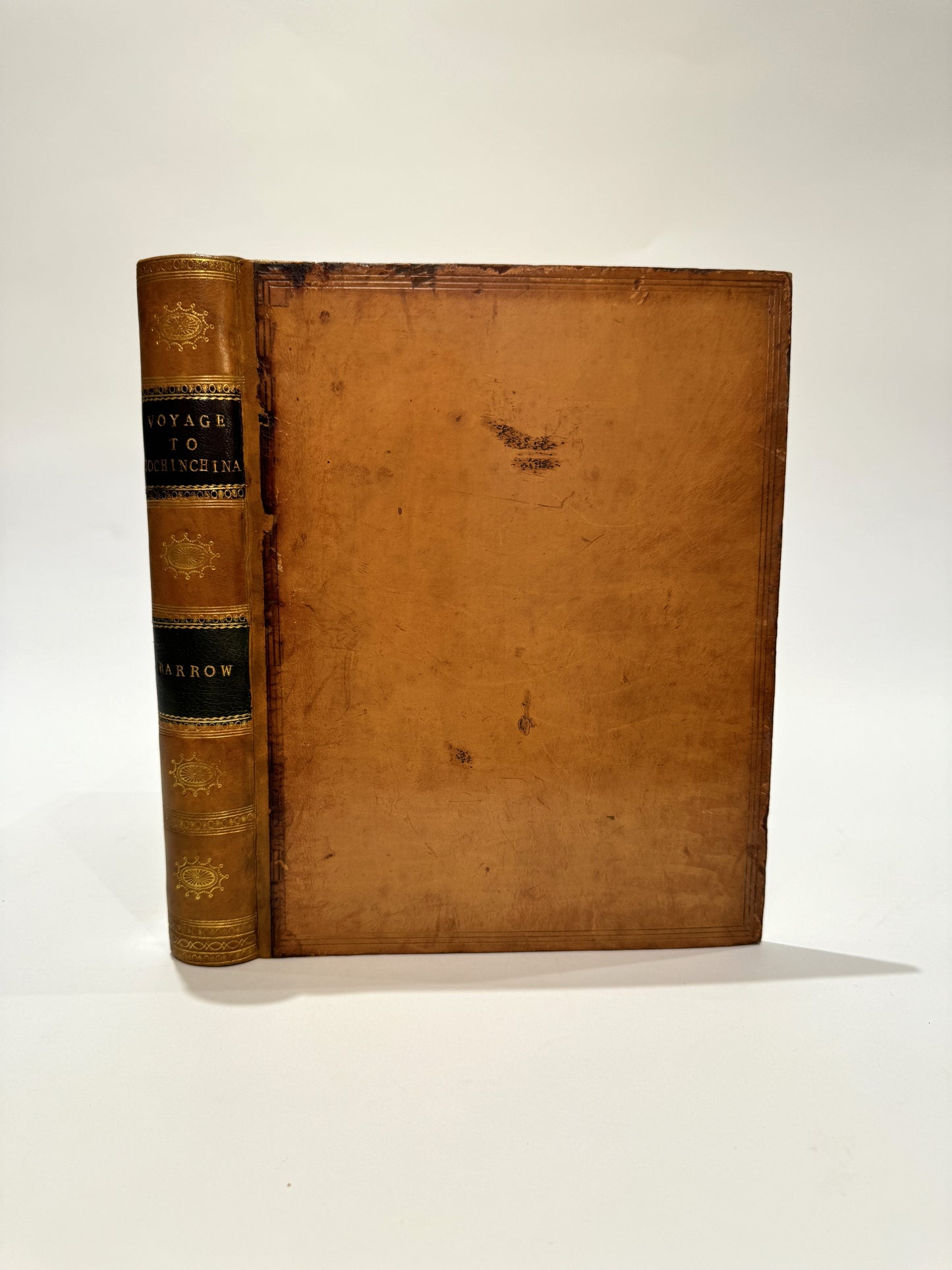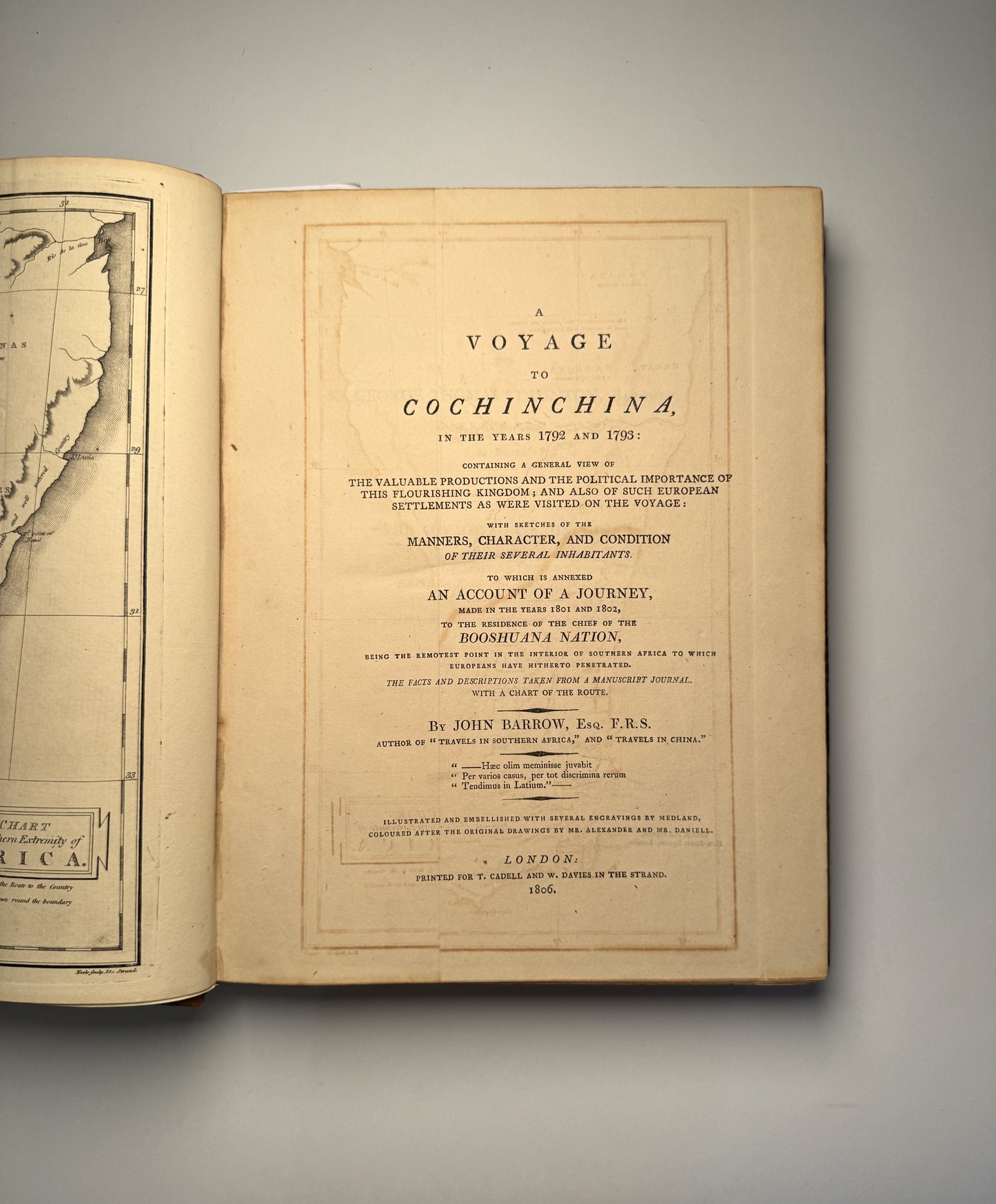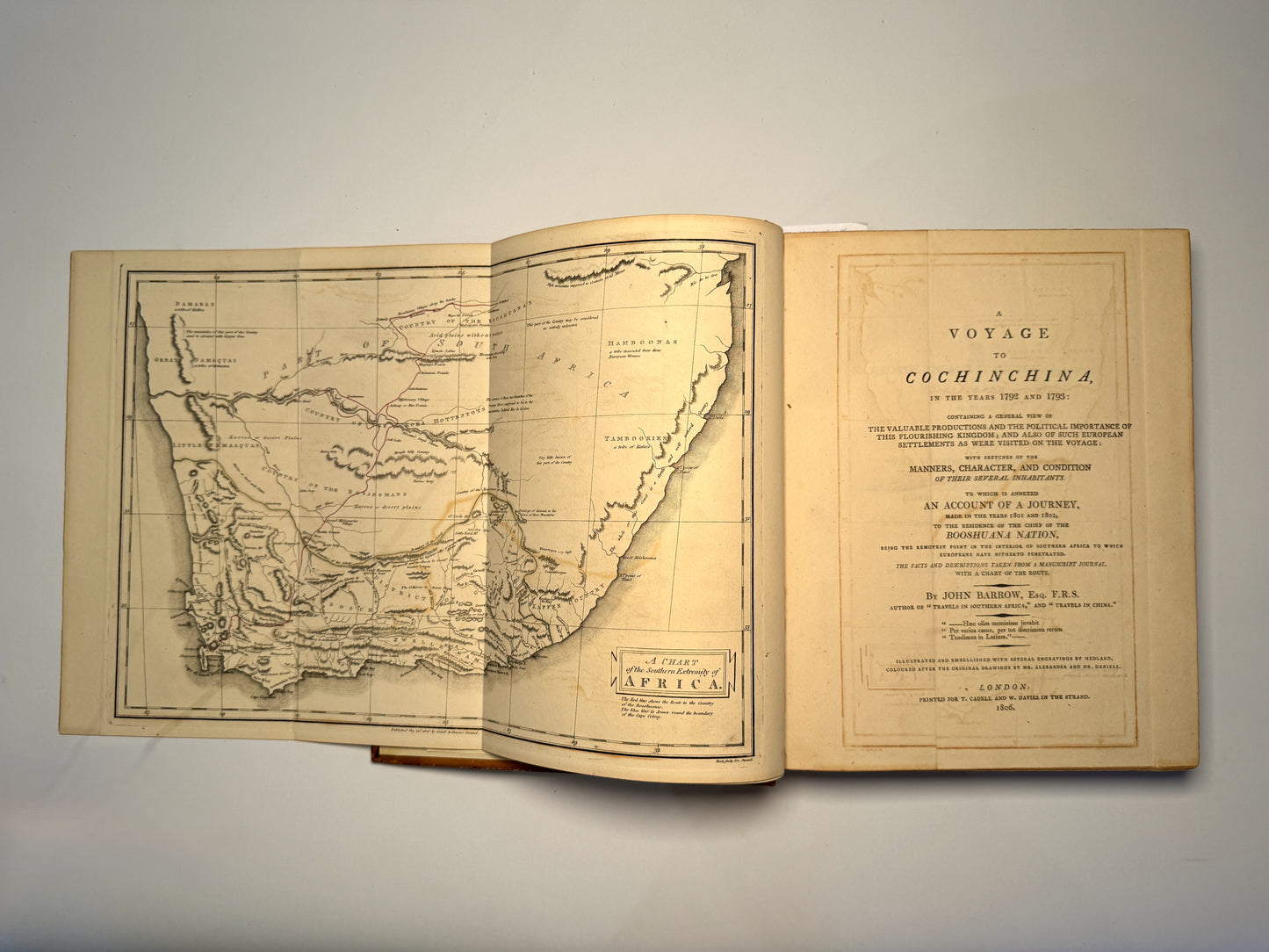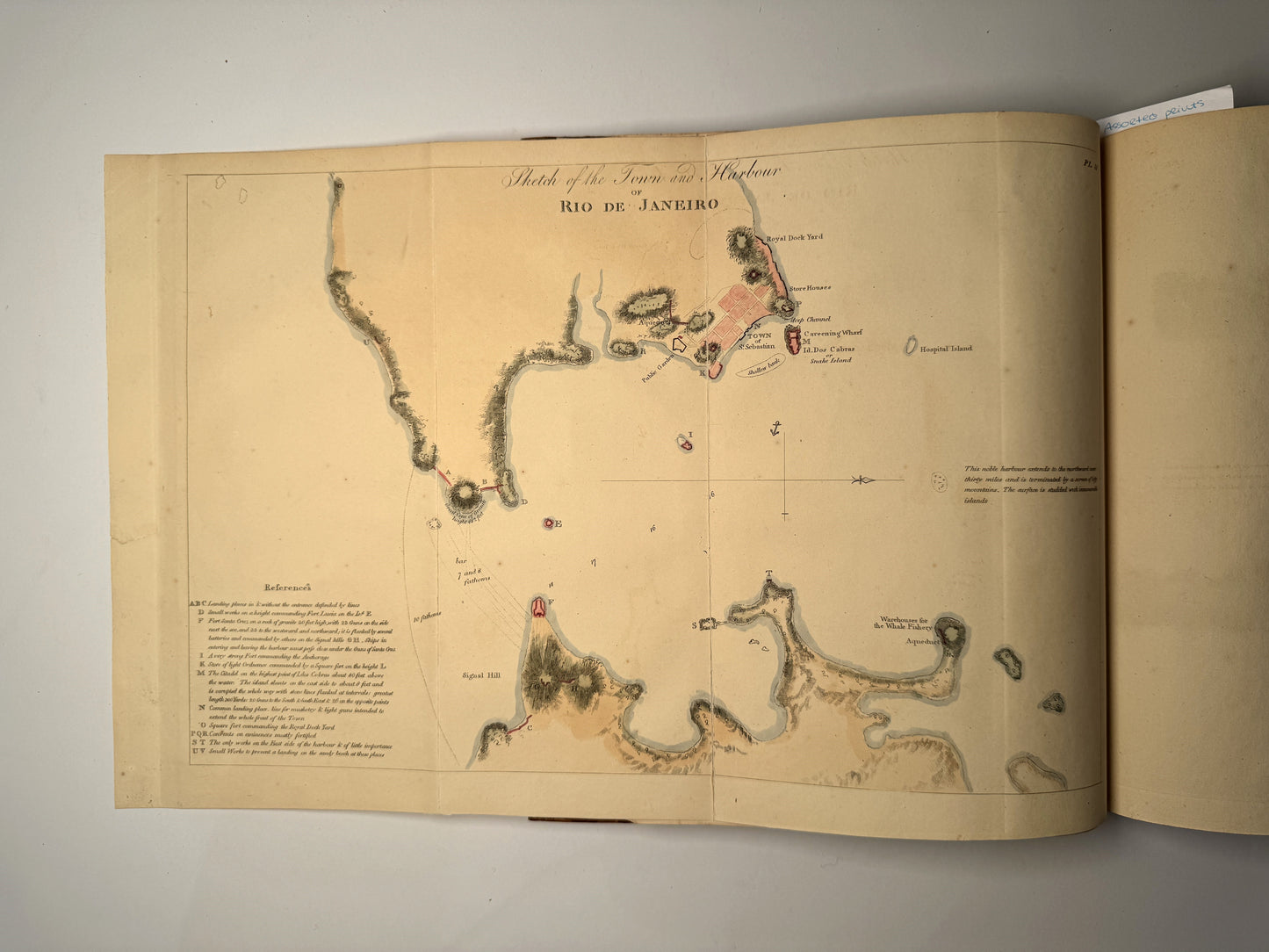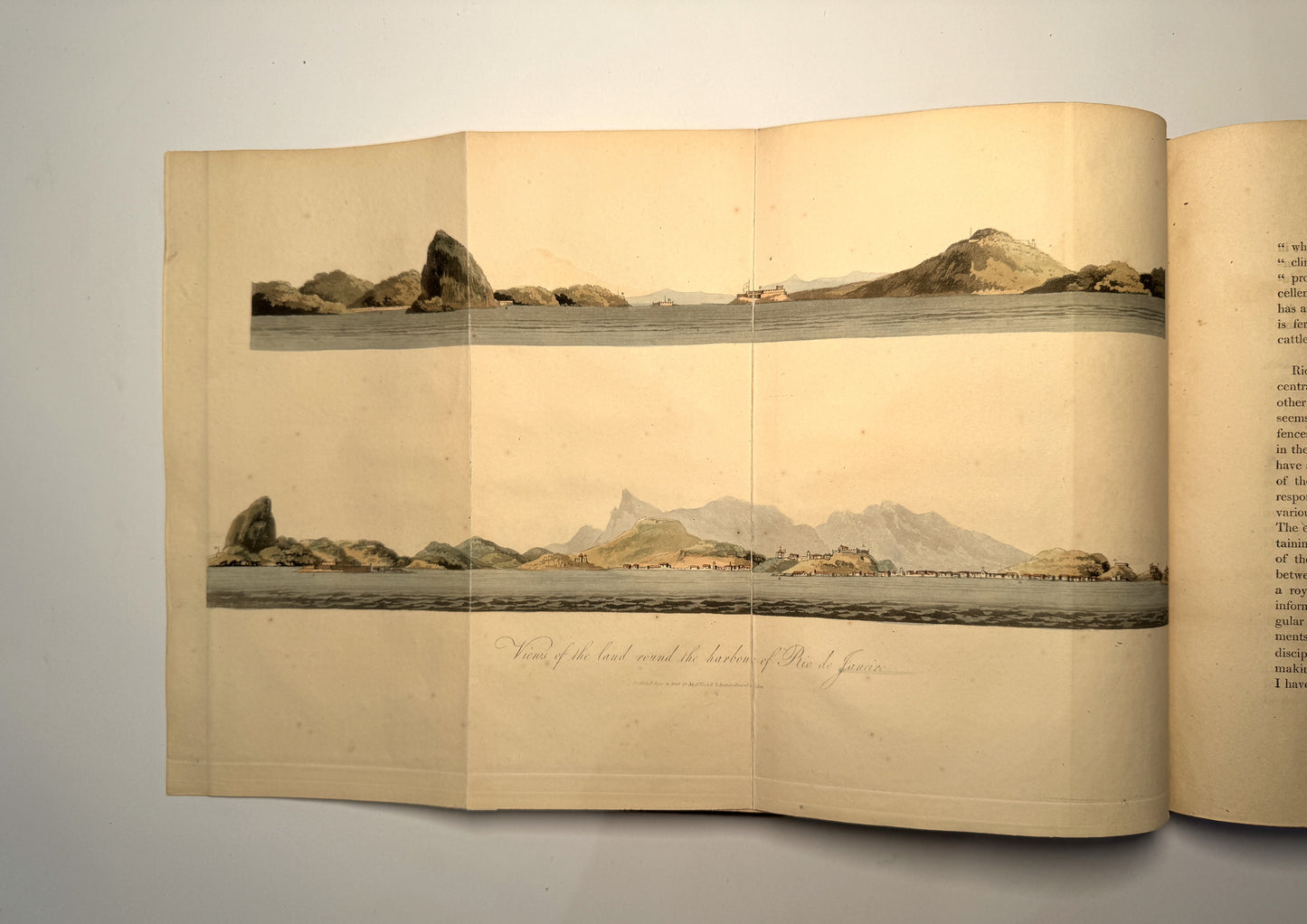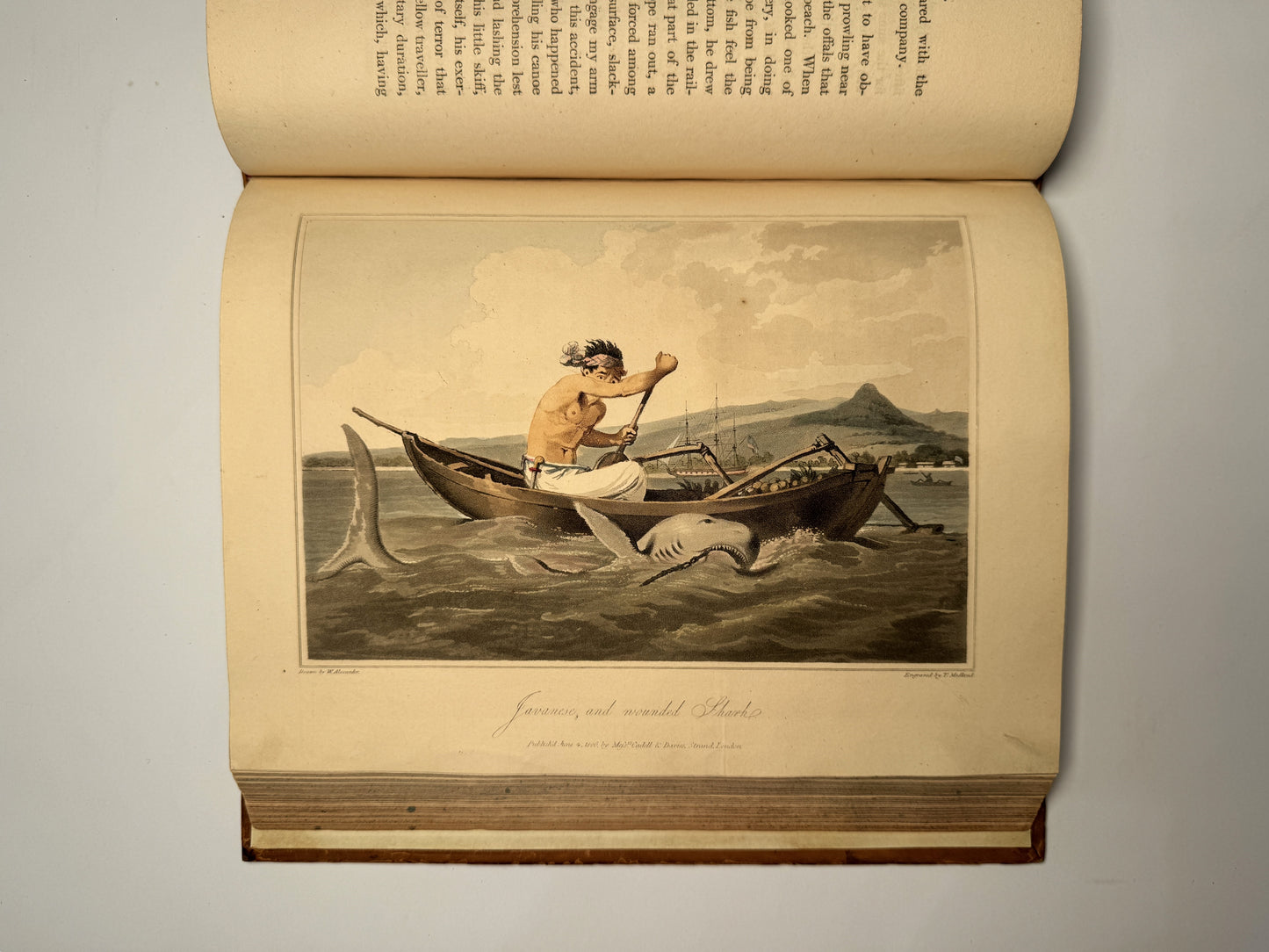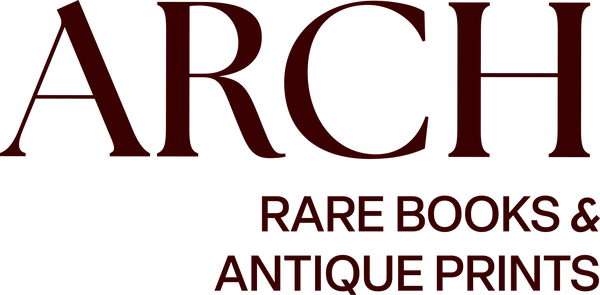John Barrow
A Voyage to Cochinchina, in the Years 1792 and 1793 | Sir John Barrow
A Voyage to Cochinchina, in the Years 1792 and 1793 | Sir John Barrow
Couldn't load pickup availability
Published by Cadell and Davies, 1806
First edition of John Barrow's "A Voyage to Cochinchina, in the Years 1792 and 1793," a landmark publication recognised as the "first illustrated English work on. Vietnam" (Hill). This meticulously crafted account documents the outward voyage of Lord Macartney's pivotal embassy to China, offering a unique window into late 18th-century maritime exploration and cultural exchange. The work is distinguished by its superb collection of aquatint illustrations, depicting breathtaking views, ethnographic "types," and detailed natural history specimens. As noted by Abbey, the aquatinting is of "excellent quality," enhancing the narrative with vivid visual representations of the lands and peoples encountered.
Barrow's narrative extends beyond Cochinchina, detailing the voyage's stops at Madeira, the Canary Islands, and Rio de Janeiro. His description of Rio de Janeiro and Brazil provides valuable insights into the region during this period. The journey continued, with a stop at Tristan da Cunha, around the Cape of Good Hope, and onward to Cochinchina via Batavia on Java. Of particular note is Barrow's account of encountering Captain Cook's HMS Resolution, repurposed as a French smuggling whaler. This discovery offers a fascinating glimpse into the post-Cook era and the evolving maritime landscape. The core of the work, the description of Cochinchina, is based on a manuscript memoir by Captain Barissy, a French naval officer who served the King of Cochinchina for several years. Barissy's intimate knowledge and "accurate information," as noted in Barrow's preface, lend the account exceptional authenticity and depth.
The volume also includes Barrow's accounts of his missions in South Africa, which, as Howgego observes, could have formed a separate publication. These accounts detail his efforts to reconcile the Ks and Boers, his topographical explorations of the Cape Colony, and his encounters with various indigenous groups, including the Ks, Hottentots, and Bushmen. Barrow's contributions extended to conducting the first census of the Cape Colony, undertaking geological surveys, and even securing an audience with Shaka, the Zulu king.
John Barrow's life and career are as compelling as his writings. Born the son of a Lancashire journeyman tanner, Barrow rose through varied experiences, including working as a clerk, a whaler, and a mathematics teacher. His association with Sir George Staunton, for whom he served as comptroller of household during the Macartney embassy, proved pivotal in his career.
Quarto (261 x 204 mm). 19 hand-coloured aquatint plates after Samuel Daniell and William Alexander, including 3 of Africa and 3 of Rio de Janeiro - one a folding view of the land round the harbour - 2 maps (one a coloured lithograph of Rio, the other an engraved chart of South Africa with route inked in red).
Share
